On June 4, 2025, Bengaluru was set to host one of the most euphoric moments in its sporting history. After nearly two decades of heartbreak, Royal Challengers Bengaluru (RCB) had finally lifted the coveted Indian Premier League (IPL) trophy by defeating Punjab Kings in a thrilling final. The streets were crowded with fans who were out to celebrate their players dressed in red and gold headed by their super stars such as Virat Kohli, Faf du Plessis and Glenn Maxwell. However, the happy scenes soon got out of control to a disaster which shocked the cricketing world.
The organizational strategy was straightforward RCB would receive felicitation by the Chief Minister of Karnataka, Siddaramaiah, and his cabinet at the Vidhana Soudha and thereafter, the celebrity would head to the M. Chinnaswamy Stadium, their bastion over the years, where a celebratory event would be held. First, they had plans to have an open-top bus parade but abandoned it because of the traffic and security issues.
Rather the team rides in closed buses straight to the stadium. Nonetheless, after getting contradictory messages on social media and local news, fans showed up in large numbers around the stadium anticipating a huge procession.
The situation outside of the gates of the stadium was anarchy. A huge crowd overcame barricades and security measures. The mishap saw 11 people die, and more than 50 others severely hurt. Emergency services could hardly cope with the occurring tragedy, and the kaleidoscopic evening turned into a gloomy tragedy in a short time. To the families of the victims, the wounds are still fresh, and the event has seen Bengaluru grapple with the issue of responsibility and security during sporting celebrations.
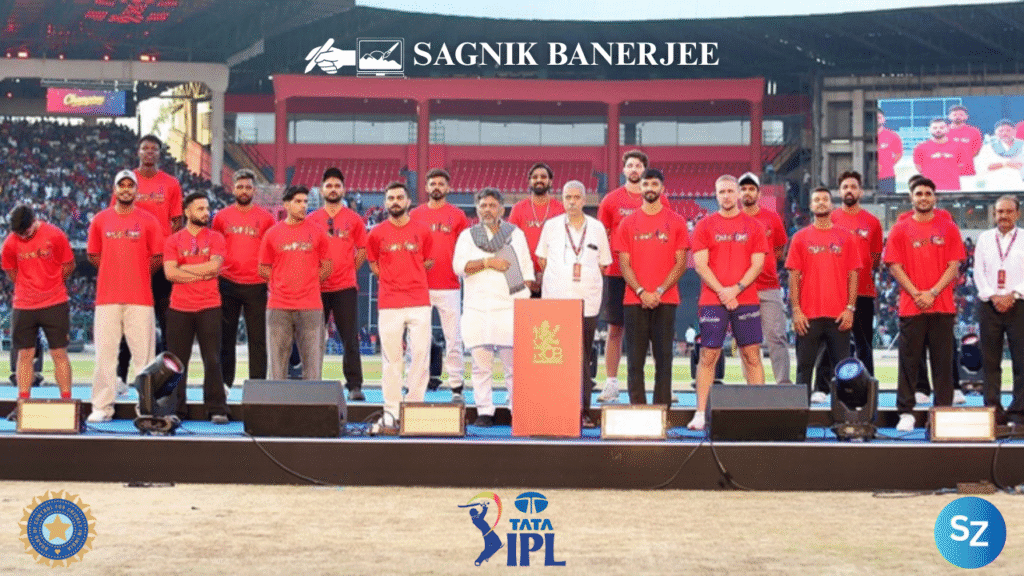
Investigations and Accountability
There was an instant public outrage. Within days, the Central Administrative Tribunal (CAT) at Bengaluru came up with an incriminating interim report, which held the management of RCB and event organizers in high accountability as they did not seek police permits and crowd-controlling measures before proceeding with the event. The government of Karnataka was not spared in criticism because it had not conducted a proper evaluation of the risks involved.
The state government, in response, sent a commission of justice headed by Justice John Michael D’Cunha to investigate the lapses. The initial results of the commission showed dismal infrastructure and planning failures. The M. Chinnaswamy stadium, despite its popularity with the fans, was said to be unsuitable to hold events on large scale unless structural and logistical improvements were made to it. The report reported that there were poor emergency exit, inadequate crowd dispersal systems, and lack of proper communication system which led to the tragedy.
The fallout was severe. The Board of Control of Cricket in India (BCCI) in consultation with the International Cricket Council (ICC) declared that the Chinnaswamy could not be regarded safe to host marquee events until major overhaul works were done. Within its first swing, Bengaluru became an unsuitable place to hold international cricket. To RCB, the winning of the championship will always be marked with a gloomy footnote, not to mention that it was meant to be their crowning glory.
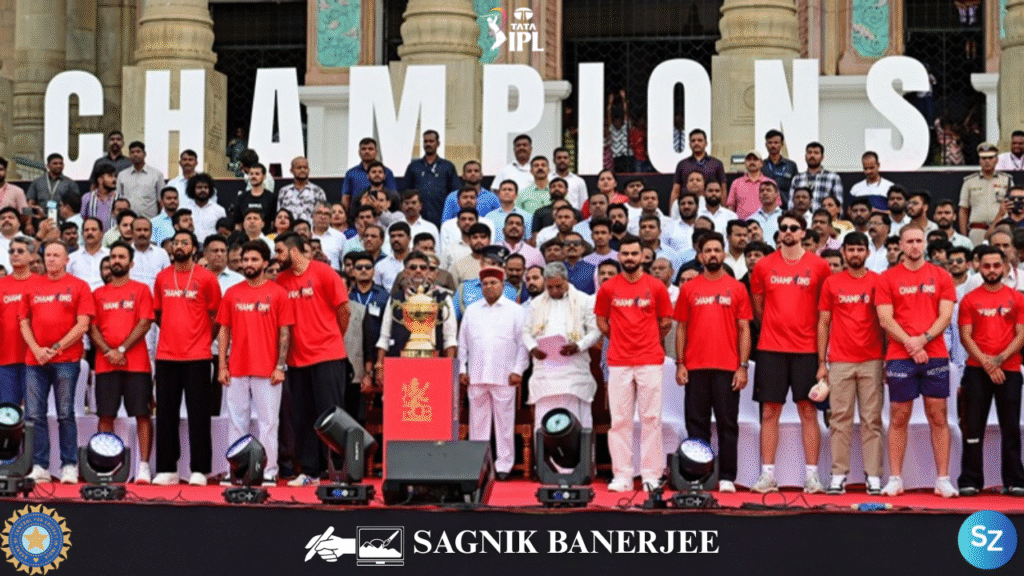
A Ban with Global Implications
While the decision to sideline the Chinnaswamy was necessary, it carried broader repercussions. The ICC Women Cricket World Cup 2025, which was to take place in the period between September 30 and November 2 in India and Sri Lanka, was also one of the direct victims of this ban. Bengaluru was also assigned several high-profile matches like Indian vs Bangladesh, one of the semifinals and possible knockout games. This left the ICC in an immediate reorganization as the stadium was canceled.
After deliberations with BCCI and local authorities, the ICC confirmed that DY Patil Stadium in Navi Mumbai would step in as Bengaluru’s replacement. ICC called DY Patil a true home to women cricket by stating that the club has modern amenities and a history of hosting Women Premier League (WPL) games. The rapid relocation also meant that the tournament timeline would not be affected, but it also highlighted how vulnerable big sporting events are when it comes to infrastructural failures.
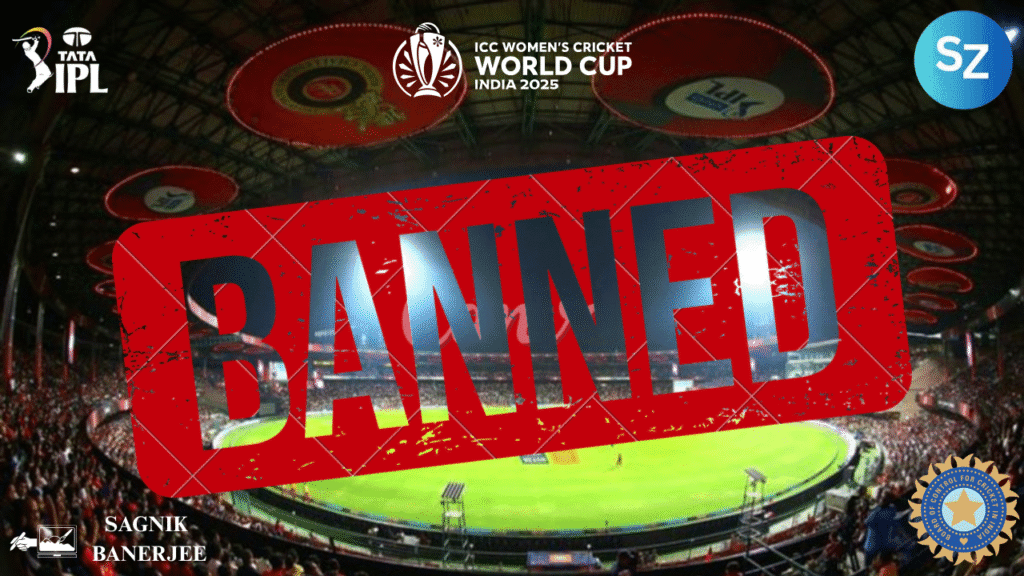
DY Patil Takes Center Stage
The DY Patil Stadium, with a capacity of over 55,000, now holds some of the World Cup’s marquee fixtures. Among the matches shifted to Navi Mumbai are:
- India vs New Zealand (October 23, 2025)
- India vs Bangladesh (October 26, 2025)
- Sri Lanka vs Bangladesh (October 20, 2025, relocated from Colombo)
- 2nd Semifinal (October 30, 2025)
- The Final (November 2, 2025).
For Indian fans in Maharashtra, this is a boon. Navi Mumbai, already steeped in WPL culture, will now host World Cup fixtures featuring the national team, bringing global women’s cricket to one of the sport’s fastest-growing fan bases. Yet for fans in Karnataka, the disappointment is palpable. Bengaluru, a city that has passionately backed both RCB and the women’s team, will not witness any Women’s World Cup action on home soil.
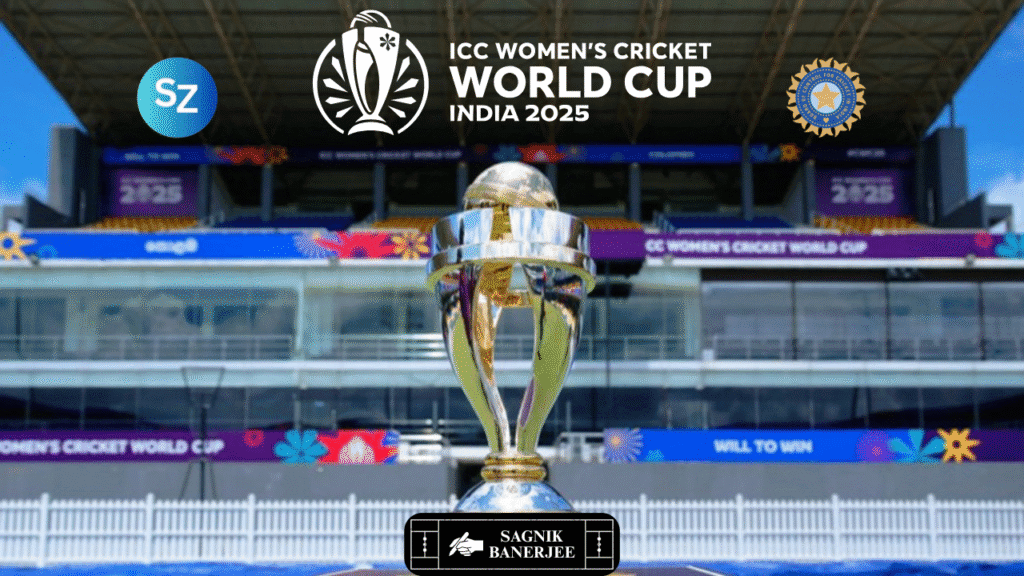
The Indian Women’s Team and the Shift in Home Advantage
For Harmanpreet Kaur’s Indian side, the shift presents both challenges and opportunities. Bengaluru’s Chinnaswamy is traditionally known for its slower, batting-friendly wickets, offering India’s spinners an edge. DY Patil, by contrast, is a more balanced ground, with truer bounce and conditions that often favor batters. While this levels the playing field for opponents, it also allows India’s formidable batting lineup, including Smriti Mandhana, Shafali Verma, Jemimah Rodrigues, and Richa Ghosh, to shine on a grand stage.
Strategically, the team must adapt quickly. Practice sessions and pre-tournament camps will focus on replicating DY Patil’s conditions. With two league matches and a semifinal scheduled at Navi Mumbai, the stadium could become India’s new fortress if they acclimatize effectively. The psychological lift of playing in front of packed home crowds in Maharashtra may offset the loss of Bengaluru’s familiar comforts.
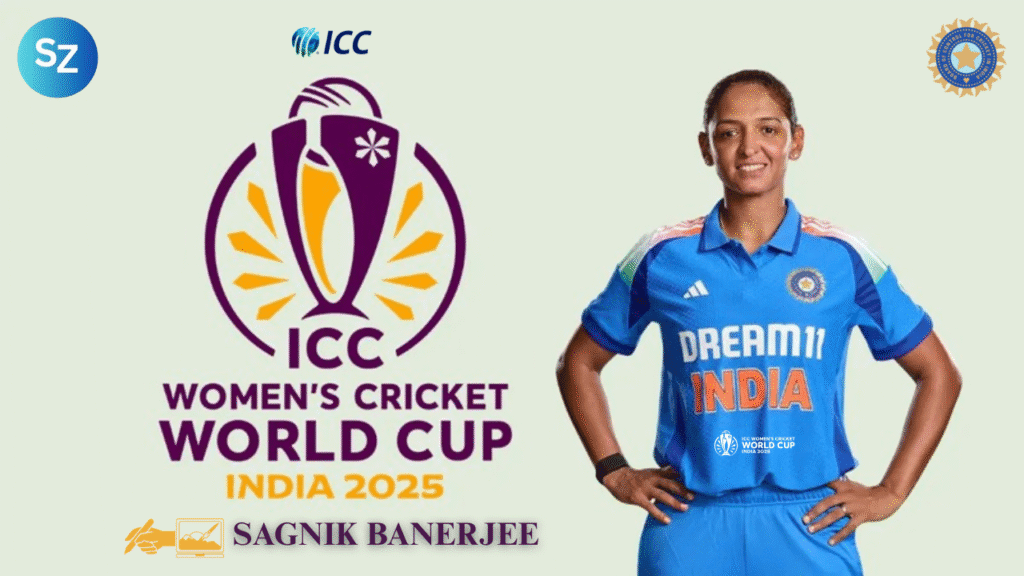
Tournament Overview: ICC Women’s World Cup 2025
The 13th edition of the ICC Women’s World Cup is shaping up as one of the most significant milestones in the history of the women’s game. Featuring eight teams: India, Australia, England, New Zealand, South Africa, Bangladesh, Sri Lanka, and Pakistan. The tournament will follow a round-robin format, with each side playing with each other, followed by two semifinals and the final. A total of 31 matches will be contested.
The tournament spans across five venues:
- Guwahati (ACA Stadium) – hosts the opener between India vs Sri Lanka on September 30
- Indore (Holkar Stadium)
- Visakhapatnam (ACA-VDCA Stadium)
- Navi Mumbai (DY Patil Stadium) – replacing Bengaluru.
- Colombo (R. Premadasa Stadium, Sri Lanka) – neutral venue for Pakistan’s fixtures.
Pakistan’s continued absence from Indian soil since 2013 ensures that all their matches will be staged in Colombo. If they progress to the semifinals or final, those games will also shift to Sri Lanka. Otherwise, the grand finale is scheduled for Navi Mumbai on November 2.
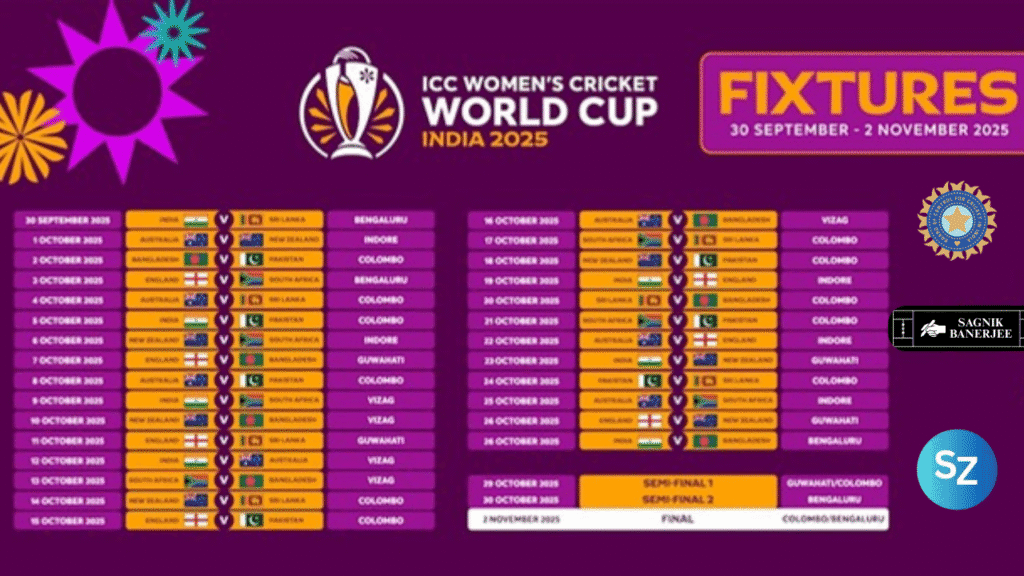
Global Contenders and Fierce Rivalries
Australia would play the tournament as defending champions, aiming to add yet another trophy to their already overflowing cabinet. Losing the 2022 final to Australia, England are formidable having the combination of youth and experience. Constantly strong performers like New Zealand and South Africa will be hoping to breakthrough, and Sri Lanka and Bangladesh will seek to have conditions of the subcontinent to their advantage to oppose the more ranked teams.
To India, it could not have been higher. Although it reached two finals (2005 and 2017) and a semifinal in 2022, the women team had not won a world cup. The hosting responsibilities provide an opportunity of golden opportunity to shatter the jinx.
The leadership of Harmanpreet Kaur, consistency of Smriti Mandhana and the emergence of youngsters such as Richa Ghosh and Shafali Verma bring a sense of hope to a side which needs glory. India has greatly ambitioned with the help of the home fans to secure a semifinal place at least.
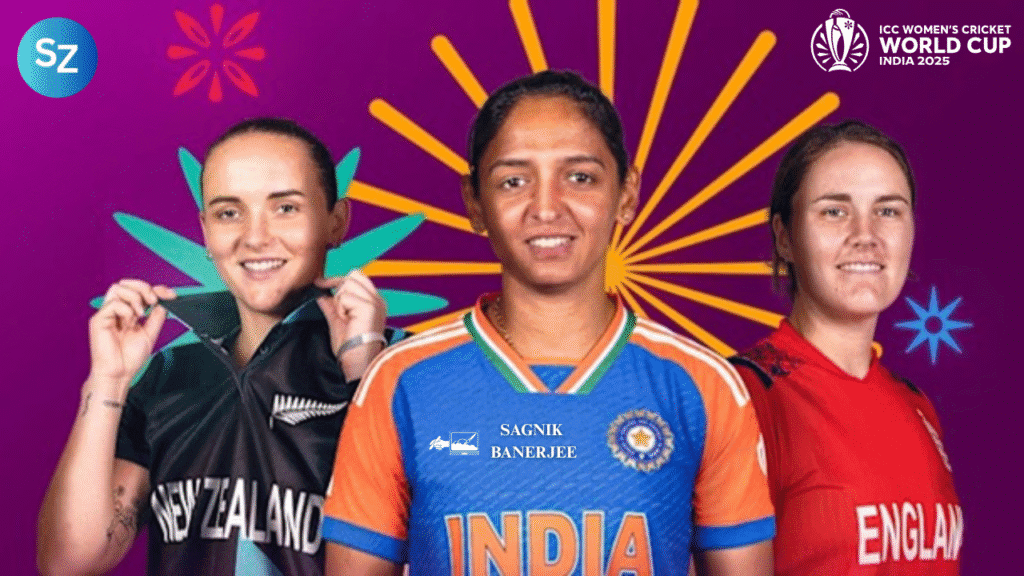
Prize Money and Growing Investment
While ICC has not formally announced the prize purse, it is expected to mirror or exceed the 2022 edition, where the total pool stood at $3.5 million, with winners receiving $1.32 million. Given the momentum behind women’s cricket, experts anticipate a further bump, signaling the ICC’s commitment to narrowing the financial gap with the men’s game.
The Women’s Premier League (WPL) in India has already demonstrated the commercial viability of women’s cricket, and a successful World Cup could accelerate that growth exponentially.
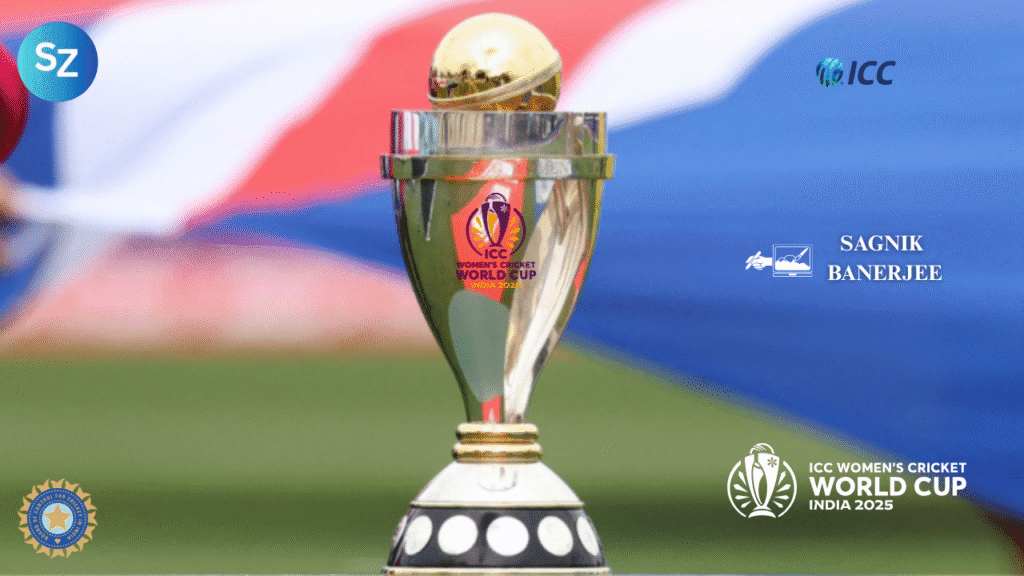
Broadcasting Channels and OTT Platforms in India
The ICC Women World Cup 2025 will not only be a historic event in the field, but also one that has a lot to do with its broadcast coverage. As women cricket is currently growing very popular in India in the last ten years, the news outlets are ready to provide women with comprehensive support through television and web-based channels to engage as many people as possible.
ICC provides some official media rights agreements, which mean that Star Sports Network is entitled to the broadcasting of the tournament in India through the television. The coverage will be inclusive and regionally varied in that the viewers can watch all matches in various languages such as English, Hindi, Tamil, Telugu and Kannada. The sports channels of Star will be likely to include expert panels, pre-match analysis, mid-innings shows and post-match analysis, so that the viewers can get wholesome viewing experience.
Disney+ Hotstar will be the main OTT streaming platform on the digital front in India, where it will be available with a free and paid subscription (based on plan). As mobile-first consumption is on the increase, Hotstar will enable cricket fans to stream the matches effectively using smartphones, tablets, and smart TVs, and shift the World Cup nearer to the millions of younger consumers who enjoy digital access. It is also anticipated that the platform would be interactive, including live statistics, polls, and fan responses to increase user engagement.
The collaboration between the traditional broadcast and OTT will mean that the Women world cup 2025 will be available in households in metros, small towns and rural areas. To the Indian Women’s Cricket Team, this kind of exposure is crucial, as it will make their story known to millions of fans and serve as inspiration to the new generation of cricketers. The 2025 edition can become the most-watched Women’s World Cup in history, and this is possible through its unprecedented coverage.
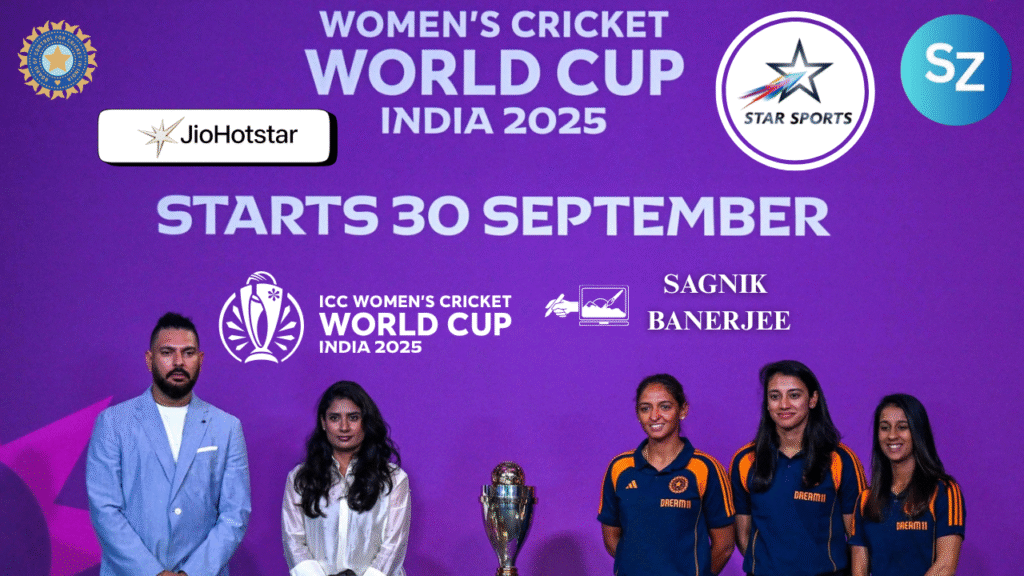
The Future of Indian Women’s Cricket
Beyond the tournament, the trajectory of Indian women’s cricket is on an upward curve. The establishment of the WPL has created a talent pipeline, giving young players exposure to high-pressure environments. Grassroots initiatives, better pay structures, and infrastructural improvements are beginning to bear fruit. Yet, challenges remain such as inconsistent performances in global events, mental conditioning, and the need for deeper bench strength.
The World Cup provides the perfect platform to address these gaps. A strong showing on home soil could galvanize further investment and public interest, positioning India as not just a participant but a global powerhouse in women’s cricket. For millions of young girls watching, seeing Mandhana loft boundaries or Renuka Singh uproot stumps could serve as inspiration to take up the sport.

ICC Women’s World Cup 2025 prepares for Historic Kick-Off amid Chinnaswamy Stadium ban
The tragic events of June 4 in Bengaluru cast a long shadow on Indian cricket, reminding everyone that safety and planning must always come before spectacle. The ban on M. Chinnaswamy Stadium is both a painful blow and a necessary corrective step. Yet from that loss emerges an opportunity: Navi Mumbai’s DY Patil Stadium now stands poised to script history, hosting crucial clashes of the ICC Women’s World Cup 2025.
For India’s women, the road ahead is clear but challenging. They must adapt to new conditions, shoulder the hopes of a nation, and strive to turn years of promise into silverware. As the tournament kicks off, fans will hope the team transforms the sorrow of Bengaluru into the joy of global triumph.
In the end, the ICC Women’s World Cup 2025 is not just about cricket. It is about resilience, accountability, and the unyielding spirit of a game that continues to grow, inspire, and unite millions around the world.


This Chinnaswamy exit is a cricketing cliffhanger! From a gloomy footnote to potentially crowning glory for RCB, the plot thickens. Good riddance to poor exits and communication failures; DY Patil sounds like the stadium with a heart (and WPL cred!). India’s women team gets a leveler – good luck against those batty batters at Navi Mumbai! Can’t wait for the World Cup drama, broadcast far and wide like a spicy WPL season. Here’s to hoping the prize money jump is as thrilling as a boundary blast!